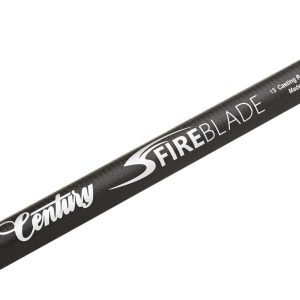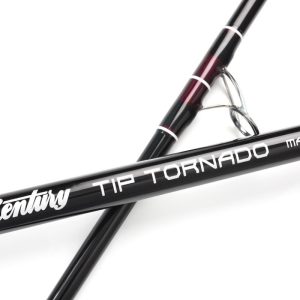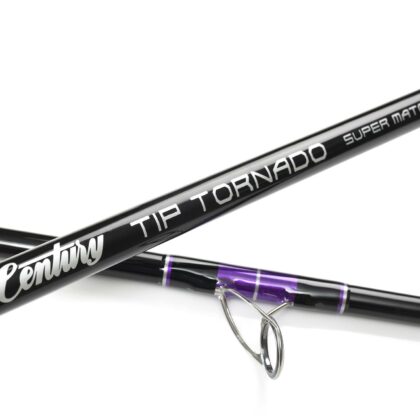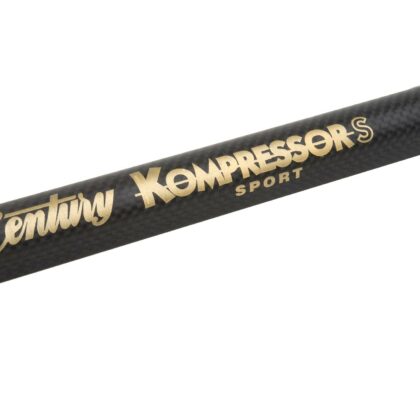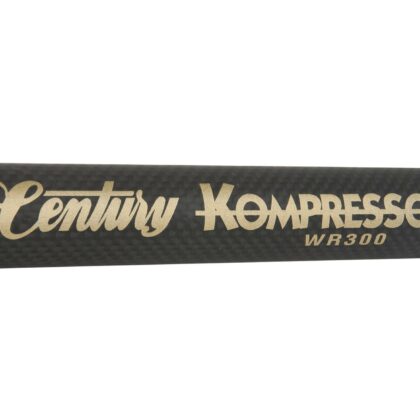In the world of sea angling, a fishing rod is far more than a simple tool; it is a meticulously engineered instrument designed to withstand the brutal forces of the ocean, transmit the subtlest of bites, and deliver a cast with both power and pinpoint accuracy. Among the pantheon of premium rod manufacturers, Century stands alone. Based in the United Kingdom, the company has built an almost mythical reputation by fusing traditional hand craftsmanship with state-of-the-art aerospace and Formula One composite technologies. Unlike mass-produced alternatives, a Century sea rod is a testament to precision and an obsessive attention to detail, a process that begins with a bare sheet of carbon fibre and ends with a finished product that is a benchmark of performance and durability. To truly appreciate the rods, one must understand the intricate, multi-stage process of their creation.
The journey of a Century sea rod begins not with a blank, but with the raw materials themselves. Century maintains a close and long-standing relationship with prime suppliers of carbon fibre, which allows them access to the highest-grade materials that make a tangible difference in a rod’s action and performance. The primary material is pre-impregnated carbon fibre, or “pre-preg.” This is not a simple sheet of carbon, but a composite fabric where the carbon fibres are already infused with a high-performance resin system. This precise pre-mixing ensures an ideal fibre-to-resin ratio, a critical factor for achieving a rod blank that is both strong and lightweight. Century’s proprietary resin systems are a key differentiator. They are not simply a binder; they are complex compounds, often fortified with materials like graphene, which significantly enhance the blank’s toughness and resilience. The sheets are stored in carefully controlled, often refrigerated, environments to prevent premature curing and maintain their integrity before they are used in the manufacturing process.
Once the pre-preg material is ready, the next step is the art of cutting and rolling. The flat sheets of carbon are cut into specific, tapered patterns known as “flags.” This is a process that demands incredible precision, as the shape and angle of each flag directly determine the final taper, power, and action of the rod. While some manufacturers rely on automated CNC cutting, Century’s process is a blend of automated precision and skilled hand-rolling. Each flag is meticulously tacked onto a tapered steel mandrel—the form that dictates the rod’s shape—and then hand-rolled with perfect pressure to ensure a flawless, void-free layup. This labour-intensive process is crucial for preventing wrinkles or air bubbles from forming between the layers of carbon, which would create weak spots and compromise the blank’s integrity. It is this human touch that guarantees the kind of structural perfection that is impossible to achieve with fully automated processes.
The most unique and critical step in the Century manufacturing process is the application of their patented Autoclave Technology. After the blank has been hand-rolled, it is placed into a high-pressure, high-temperature vessel known as an autoclave. This is the same technology used in the aerospace and Formula One industries to create composite components for aircraft and race car chassis. Inside the autoclave, a combination of vacuum pressure and heat is applied to the blank. This process compresses the carbon composite, evacuating any remaining excess air and resin. The result is a composite that is completely “void-free” and exceptionally dense. Compared to rods cured in a standard oven, an autoclave-cured rod is significantly stronger, resists fatigue and “action decay” over time, and can withstand far higher levels of bending and loading. This advanced curing process is a cornerstone of Century’s reputation for producing rods that not only perform at the highest level but also maintain that performance for decades.
With the blank cured and at its maximum structural potential, it moves on to the finishing stages. The blank is first precision-ground to its final diameter and shape, a process that smooths out any imperfections from the curing process. It is then sealed with a protective, low-scratch finish, which not only provides a pristine aesthetic but also guards the carbon from incidental knocks and scuffs. This is particularly important for sea rods that are often used in demanding, rocky environments. The finished blank is then handed to master craftsmen who perform the final assembly. This involves fitting the guides, reel seat, and handle with exceptional care. Century often partners with leading component manufacturers like Fuji and American Tackle, using their high-performance guides (such as the Fuji K-guides, known for their anti-tangle properties) and reel seats. The guides are hand-whipped onto the blank, a process that requires a steady hand and a keen eye to ensure perfect alignment and proper spacing, which are vital for a smooth line flow and maximum casting efficiency.
Beyond the fundamental steps, Century integrates several proprietary technologies to set its rods apart. Their Generation 2 Anti-Twist Technology (AT-T) is a prime example. During the casting motion, a rod is subject to immense torsional forces, which can cause the blank to twist, leading to line frap, loss of energy, and reduced casting accuracy. Century’s AT-T combats this by strategically inserting very fine grades of ultra-high-strength carbon fibre at varying angles within the blank’s wall. This design resists angular acceleration and twisting, maintaining the alignment of the guides and ensuring that all the stored energy is released in a single, straight plane. This results in greater casting distance and superior accuracy.
The final stage is the most rigorous: quality control. Each rod produced at the Century factory has an individual manufacturing record that can be traced back to every single raw material used in its construction. This traceability, combined with extensive in-house testing, ensures that every rod meets the company’s exacting standards. From stress-testing the blank’s recovery speed to confirming the perfect alignment of every guide, no detail is overlooked. It is this combination of world-class materials, cutting-edge technology, and a deep-seated commitment to craftsmanship that makes a Century sea rod an investment for a lifetime of fishing. It is not merely a tool for catching fish, but a work of art born from a manufacturing philosophy that elevates engineering to an art form. Every cast, every bite, and every fight is a direct result of this uncompromising process.


